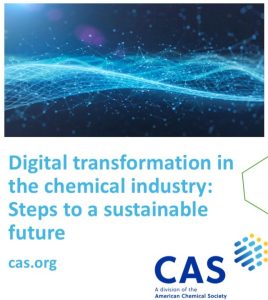Abstract
To address the growing challenges of water scarcity and environmental regulations, industries are increasingly adopting Zero Liquid Discharge (ZLD) technology. ZLD systems, particularly those utilizing Mechanical Vapor Recompression (MVR), offer a cutting-edge solution by treating nearly all industrial effluent and converting it into reusable water and solid waste. The MVR-based ZLD system excels in energy efficiency, reducing operational costs by up to 45% through heat recovery, and features a compact, modular design that simplifies installation. This system is particularly effective for water-intensive sectors like textiles, where it can recycle 90-98% of effluent and recover valuable by-products. By integrating ZLD technology, industries can significantly cut freshwater consumption, achieve water positivity, and contribute to environmental sustainability. Jay Kumar Singh, with extensive experience in wastewater treatment technologies, highlights the transformative potential of ZLD systems in fostering a greener industrial future.
Going Green: How ZLD Technology is Revolutionizing Industrial Wastewater Treatment
Stricter environmental regulations, water scarcity and mounting pollution concerns are pushing industries to adopt sustain able effluenttreatment methods. This has opened doors for innovative and sustainable solutions like Zero Liquid Discharge (ZLD) to tackle the growing burden of industrial effluent and enhanced the reuse and recycling of effluent.
Traditionally, industries have struggled to manage effluent effectively. But ZLD offers a game-changing approach. It treats almost every single drop of effluent and helps to keep waterways free from pollution. This system eliminates liquid discharge altogether by concentrating the effluent into solid crystal waste, which can then be safely disposed of effluent treated through ZLD can be used for industrial processes, gardening, irrigation, etc. These are the biggest bonus points we get after using ZLD system which treats effluent and converts it into 90-98% reusable water going back to Industry as process makeup water of RO/Soft Quality Water, hence heavily reducing the consumption of freshwater. This conscious effort of incorporating ZLD systems is the need of the hour to help industries achieve water positivity and water valorisation.
ZLD Applications
ZLD technology is particularly suitable for industries with high water consumption and stringent effluent discharge regulations. Common applications include:
- Power plants: Cooling water, boiler blowdown, and wastewater treatment
- Chemical and petrochemical industries: Process wastewater and wastewater from manufacturing processes
- Pulp and paper industry: Wastewater from pulp washing, bleaching, and paper machine operations
- Food and beverage industry: Wastewater from processing, cleaning, and sanitation
- Pharmaceutical industry: Wastewater from manufacturing processes and laboratory operations
There are the two prominent technologies under ZLD namely, Multi Effect Evaporator (MEE) and Mechanical Vapor Recompression (MVR). Multi-effect evaporators require steam and electricity for operation, while mechanical vapor recompression relies only on electricity.
About Mechanical Vapour Recompression Based Zero Liquid Discharge
ZLD is highly efficient, modular, and compact Mechanical Vapour Recompression (MVR) based ZLD system. This system stands out for its ability to utilize the heat released from vapours, significantly reducing energy consumption during the evaporation process.
Features of Mechanical Vapour Recompression (MVR)
- Reduced Energy Consumption: MVR technology captures and reuses heat energy from vapours and lowers opex substantially up to 45%.
- Compact Footprint and Modular Design: This space-saving in-house designed system is easy and faster to install. Its prefabricated, plug-and-play design ensures a smooth setup and minimizes installation time at site.
- Patented Two-phase Closed loop system Technology: This innovative technology guarantees reliable performance and zero steam requirement eliminating the requirement of boilers and auxiliaries.
- MVR ZLD System, an Innovative Evaporation Process Using Mechanical Vapour Recompression
- Preheating and Flashing: Effluent is preheated before entering a flash vessel. Inside the vessel, a portion of the water transforms into vapour due to the sudden pressure drop.
- Vapour Compression and Heat Exchange: The generated vapours are compressed to increase their pressure and temperature, then used as a heat source in a heat exchanger to establish evaporation of effluent. The vapours are then condensed to form condensate which can be used as clean water for various industrial applications.
- Drying and Crystallization: The concentrated effluent is further fed to a special dryer unit (ATFD) equipped with two phase closed-loop technology. This innovative system ensures even heat distribution, making it ideal for treating heat-sensitive materials. Here, the concentrated effluent is transformed into Powderformsolids.
- Automated Control: The entire process, from preheating to drying, is controlled by a PLC (Programmable Logic Controller) for seamless operation and safety.
MVR system can be marked as exemplary solution to sectors like automobile, food and beverage, pharmaceutical, petrochemical, packaging and paper, chemical, textile, polymer and polyester, tannery, agrochemical, metals and minerals, distilleries, cement, sugar, etc.
Zero Liquid Discharge Systems: A Boon for Tough to Treat effluents
The textile industry is a leading consumer of water, and it ranks among top ten water consuming industries. Almost all dyes, specialty chemicals, and finishing chemicals are applied to textile substrates from water baths. In addition, most fabric preparation steps, including desizing, scouring, bleaching, dyeing and mercerizing, use aqueous systems.
With the extensive water consumption throughout the textile processing operations, on average 90-95% of the water used by the factory ends up as effluent. In this scenario of severe water usage and creation of effluents, zero liquid discharge features as the boon. 90-98% of effluent gets recycled through the overall Zero Liquid Discharge System. Recovered salts(NaSO4, NaCl, etc) from the process can be reutilized in the textile processes as resource recovery.
MVR ZLD system is a revolutionary solution that not only tackles effluent management effectively, but also prioritizes energy savings, operational efficiency and helps industries to achieve water positivity and water valorization. By choosing ZLD technology, industries can embrace a sustainable future while contribute to a cleaner and greener environment.
Advancements and Future Trends
To address these challenges and improve ZLD performance, researchers and engineers are actively exploring:
- Energy-Efficient Technologies: Developing new technologies and optimizing existing ones to reduce energy consumption.
- Advanced Membrane Materials: Developing membranes with improved selectivity, fouling resistance, and durability.
- Integrated Systems: Integrating ZLD with other wastewater treatment processes to enhance overall efficiency and cost-effectiveness.
- Digitalization and Automation: Leveraging digital technologies to optimize ZLD operations and improve process control.
































